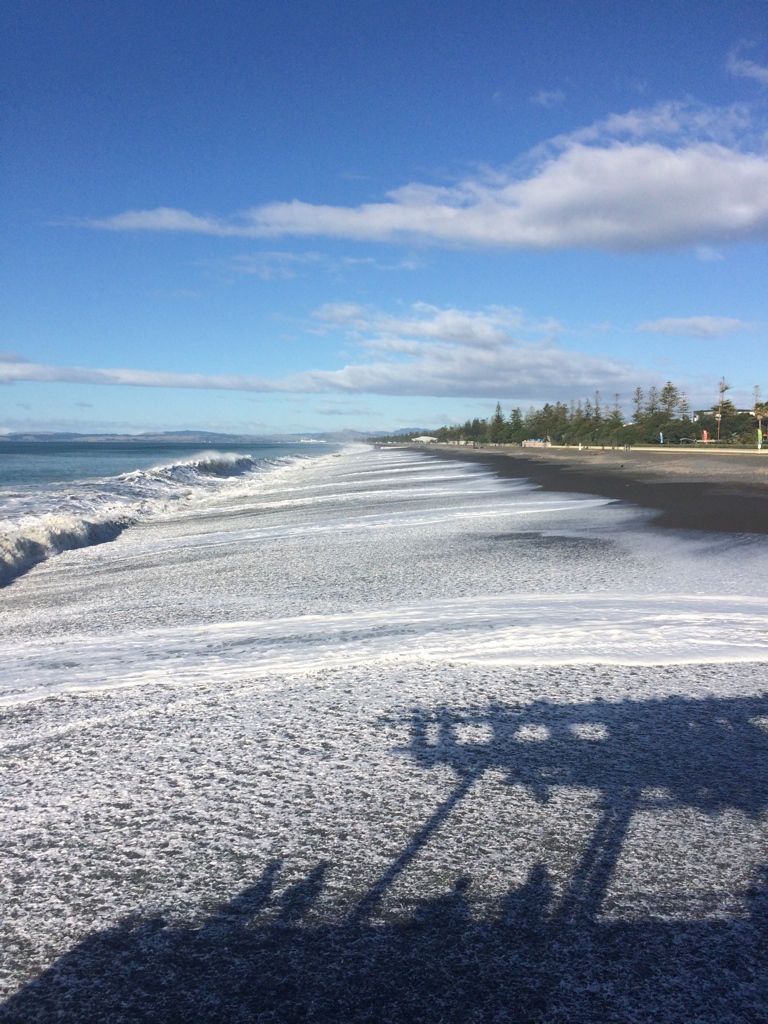Wave Climate.
Waves play a pivotal role in shaping coastal landscapes. Coastal environments are constantly adjusting to wave conditions where small waves tend to push sand onshore and build up the beach, while big waves strip sand away from the beach face and move it offshore.
The wave climate refers to the statistical description of average wave conditions over time and in different parts of the ocean, such as wave height and wave direction. Typically, in New Zealand, the east coast experiences a calmer wave climate compared to the west coast. In contrast to storm events that temporarily increase sea level and wave height for a matter of hours or days, changes in the wave climate occur over longer timescales, resulting in longer term coastal change.
For instance, if the wave climate in certain New Zealand regions intensifies we can expect larger waves to more frequently impact the coast, accompanied by higher water levels due to wave set up (an increase in water level due to breaking waves at the coast).
The Coast and Ocean Collective Coastal Hub published wave projection (future) and hindcast (past) wave datasets for New Zealand. Check out the link below if you want to find out more about the wave datasets available for New Zealand.



